E
R
I
C
R
U
S
C
H
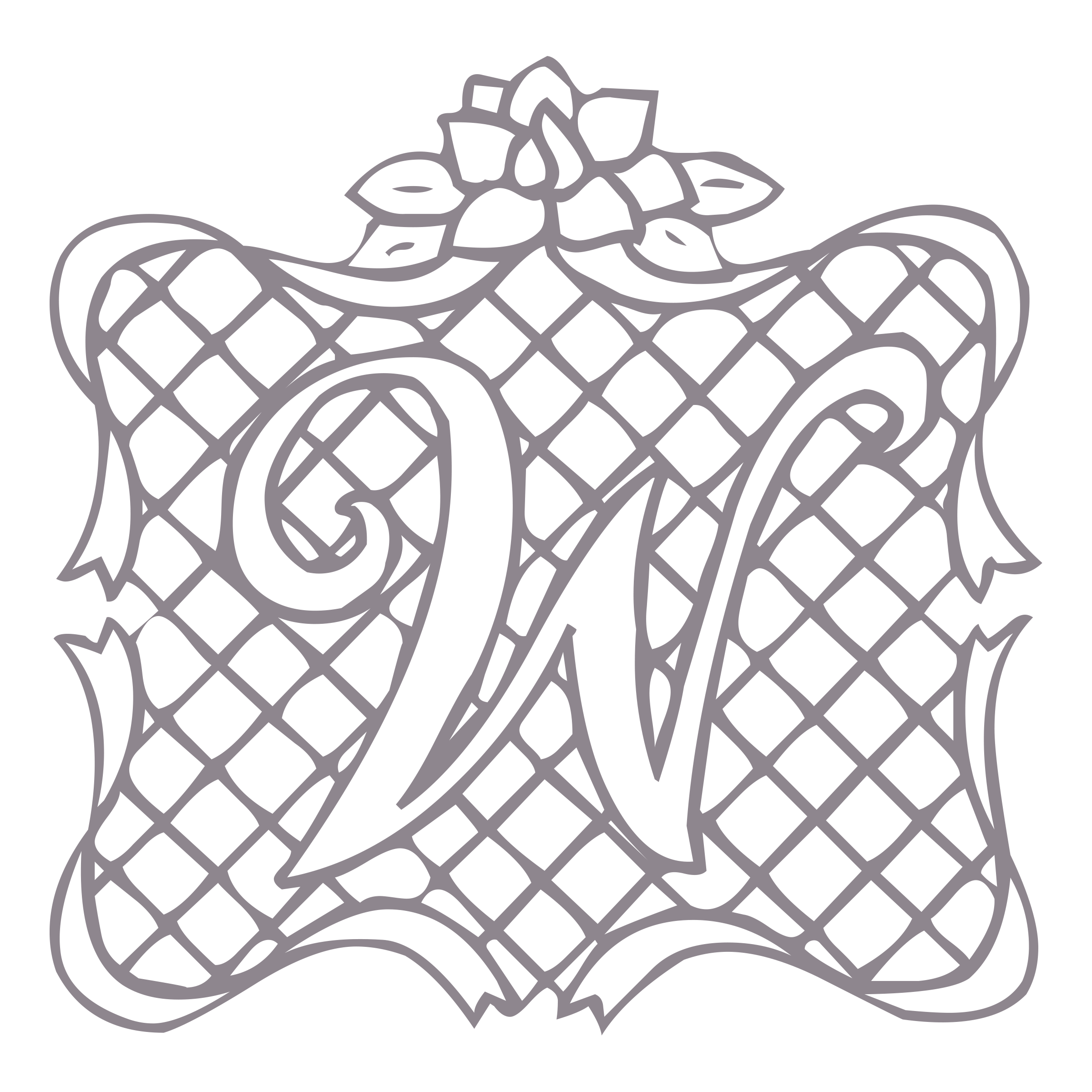
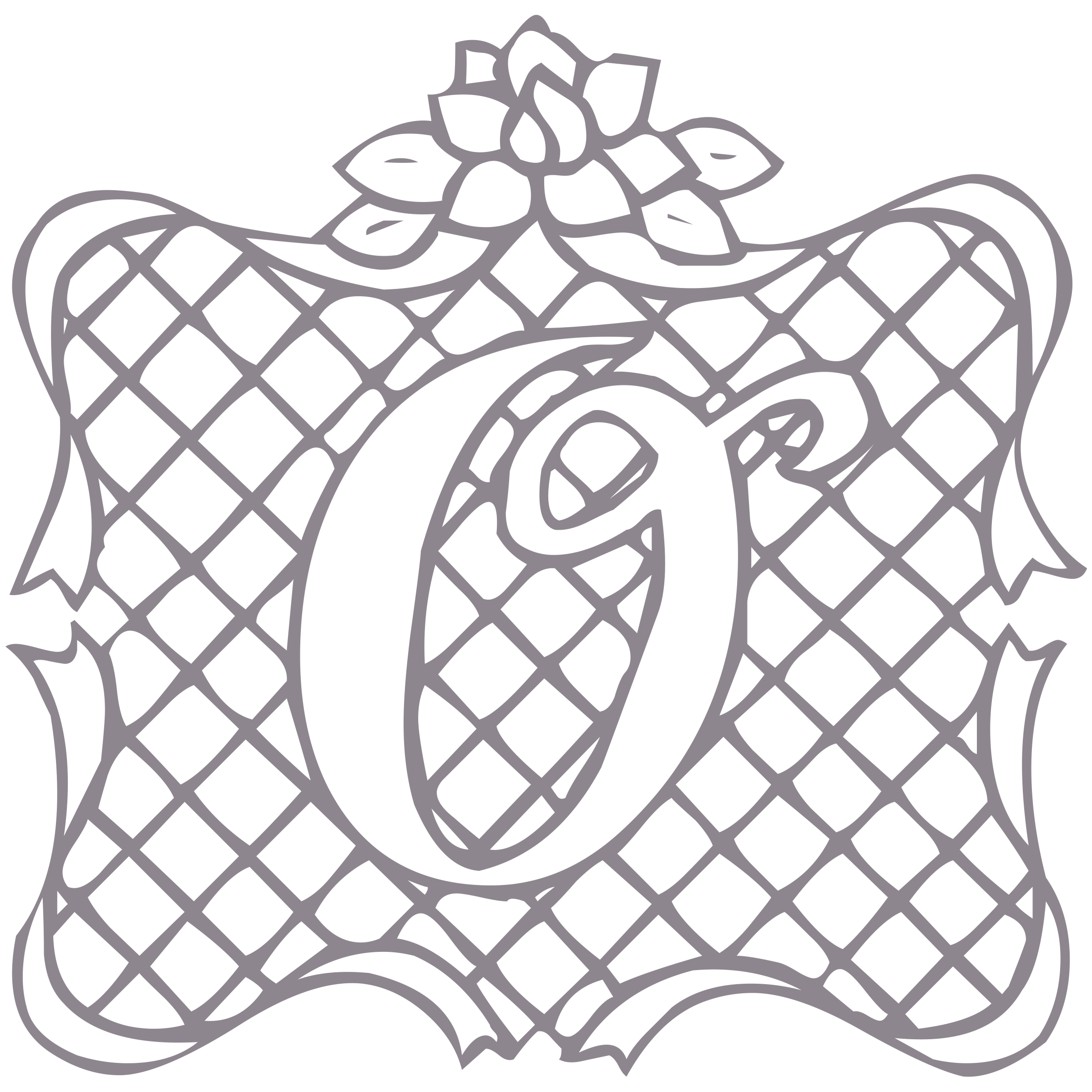
M
A
N
E
R
I
C
R
U
S
C
H


M
A
N
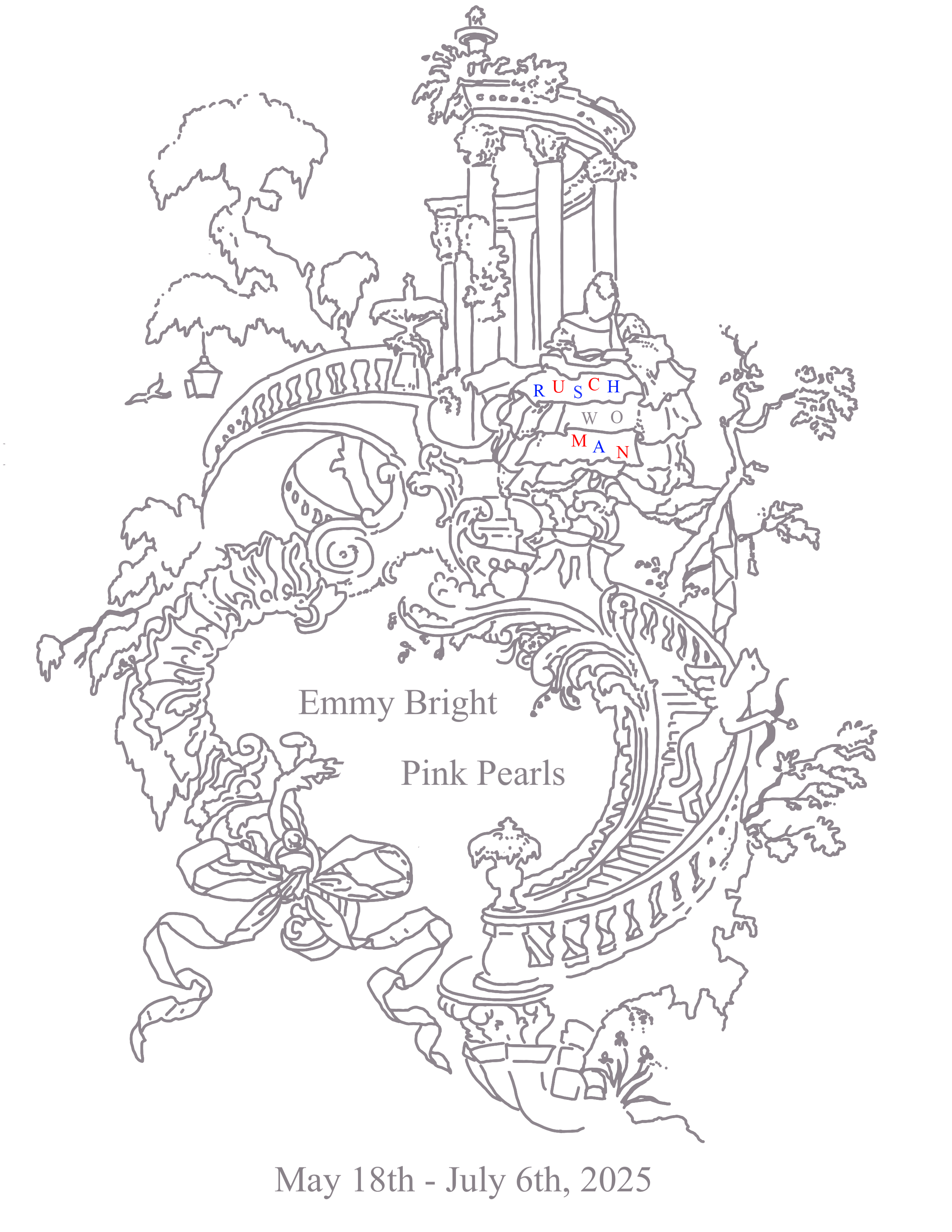
Emmy Bright
Pink Pearls
RUSCHWOMAN
May 18 — July 6, 2025
Opening Reception: Sunday, May 18, from 3–6PM
Outside of the Opening, gallery hours are available by appointment only.
Please contact thewaves@ruschwoman.blue to make arrangements
to visit RUSCHWOMAN during the run of the exhibition.
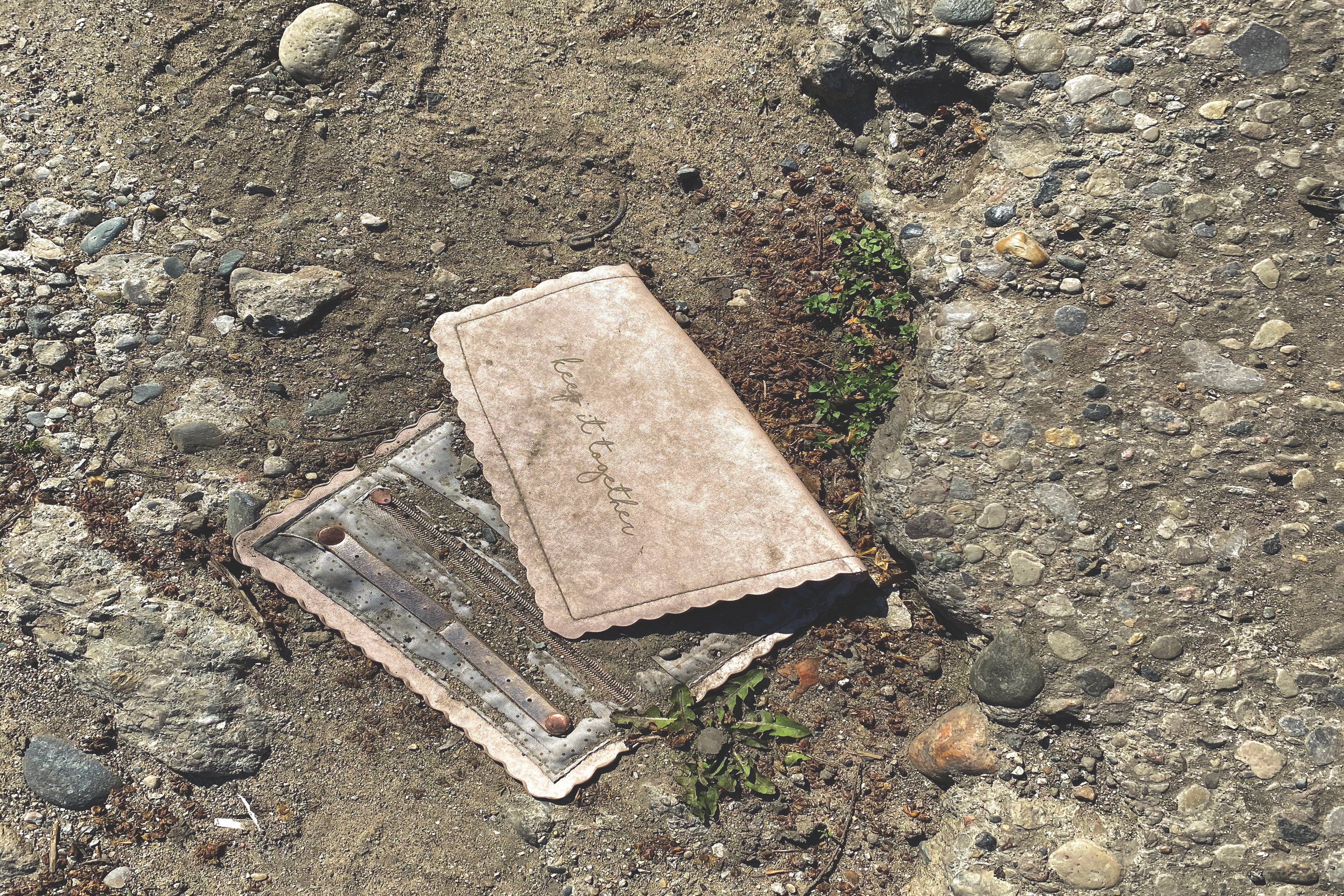
31.
…and lovely laughing—oh it
puts the heart in my chest on wings
for when I look at you, even a moment, no speaking
is left in me
no: tongue breaks and thin
fire is racing under skin
and in eyes no sight and drumming
fills ears
and cold sweat holds me and shaking
grips me all, greener than grass
I am and dead—or almost
I seem to me…
46.
and I on a soft pillow
will lay down my limbs
–Sappho. If not, winter. Translated by Anne Carson
Eros, freed from surplus-repression, would be strengthened, and the strengthened Eros would, as it were, absorb the objective
of the death instinct…In a repressive civilization, death itself becomes an instrument of repression.
–Herbert Marcuse. Eros and Civilization, 1956.
Pynk like the inside of your, baby (we're all just pynk)
Pynk like the walls and the doors, maybe (deep inside, we're all just pynk)
Pynk like your fingers in my, maybe
Pynk is the truth you can't hide
–Janelle Monáe. “Pynk.” Dirty Computer.
Bad Boy Records, 2018.
When butches cry
they weep, they wail,
they gnash their teeth
and moan
Strong woman’s pain
it’s just the same
except it’s mostly done
alone.
–Bonni Barringer. “When butches cry.”
The Persistent Desire: A Femme-Butch Reader.
Ed. Joan Nestle. Boston: Alyson Publications, 1992.
Emmy Bright’s new solo exhibition Pink Pearls is the grave site of Alice B. Toklas on the reverse side of Gertrude
Stein’s headstone in the Père Lachaise Cemetery in Paris. It’s the spot where a lip curls into the dark wet backside of itself
in a mouth. It’s an exit wound. It’s cream cheese icing on red velvet cake; it’s rosacea on the face of the culture wars storming
around us. It’s heartfelt and full of heart.
Bright provides tough, existential questions with material stakes, orienting a panoply of mediums toward inquiries and analyses
that are as squishy and mutable as they are pluralistic and galvanized by their own doubts, loopholes, and queernesses. For the
better part of a couple of decades, Bright has skittered along the structural limits (and breaches and excesses) of language,
affect, and an ethics of living with prints, publications, performances, objects, drawings, collages, quilts, and installations
that lend seductive formal refinement to performative comedy-tragedies. Moody and ebullient, hers is a practice of aching
disclosures that shatter heterosexist mores and the rigidity of public/private spheres maintained by capitalist notions of
ownership, gender norms, and repressive shame.
Amid neo-punk confessional scrawls, flurries of annotations and speculations, and hurly-burly affectations, Bright frequently
compliments blunt efficiencies of form and concept with tender gestures relaxed into softness. Against the nullifying directives
that ego must be reproduced (biologically, among other impulses) in order to establish meaning, Bright proliferates modes of care
expressed and received that have sustained queer lives for generations—an emboldened capacity for love in the face of social and
political forces that would deploy linguistic turns, legislative mandates, and threats of violence that would seek to annihilate
the possibilities of queer existence outright. But as butches and femmes, radical faeries, lesbian separatists, radical lesbian
feminists, friends of Dorothy, kings, queens, crips, NBs, trans dolls and dudes, and a problematic rainbow of other
positionalities demonstrate, we persist, reified through the invocations of us in their rejections, plotted into their metadata
and AI learning models, through their own absolute failures to act only within the bounds of the normative categories they
espouse.
Forms of love: pockets full of posies, pairs of pebbles, puppy bellies, poetry, mementos (and their goth sisters, memento mori),
mix tapes, melancholy, relics, remembrances, camp connoisseurship and the drive to collect, humor, horror, hysteria, hamfisted
hijinks, diaries, whimsy, what all is revealed by one’s preferred flavors of jelly beans, blood, sweat, tears (see also: big gay),
gore, an intentional divestment from discrete monolithic notions of selfhood.
When RUSCHWOMAN invited Emmy Bright to gather up some of the soft pink things that have made appearances in the work, none of us
knew that beneath those blushing cheeks (and sheets, and ceramic trays, and metal casts) would be LOVE and DEATH, those most
crucial of cultural underpinnings, those most emo and most urgent of tropes by which we understand our own existences. The stakes
are high; the gestures are flouncy; the posturing is in repose. In a rhapsody of pleasure-principle-death-drive upset, this
promiscuous body of work keeps it together—integrating contradiction, pink-eraser erasing divisions, riding away into the sunset
on proposals for unending questioning.
Emmy Bright, Pink Pearls, Installation View
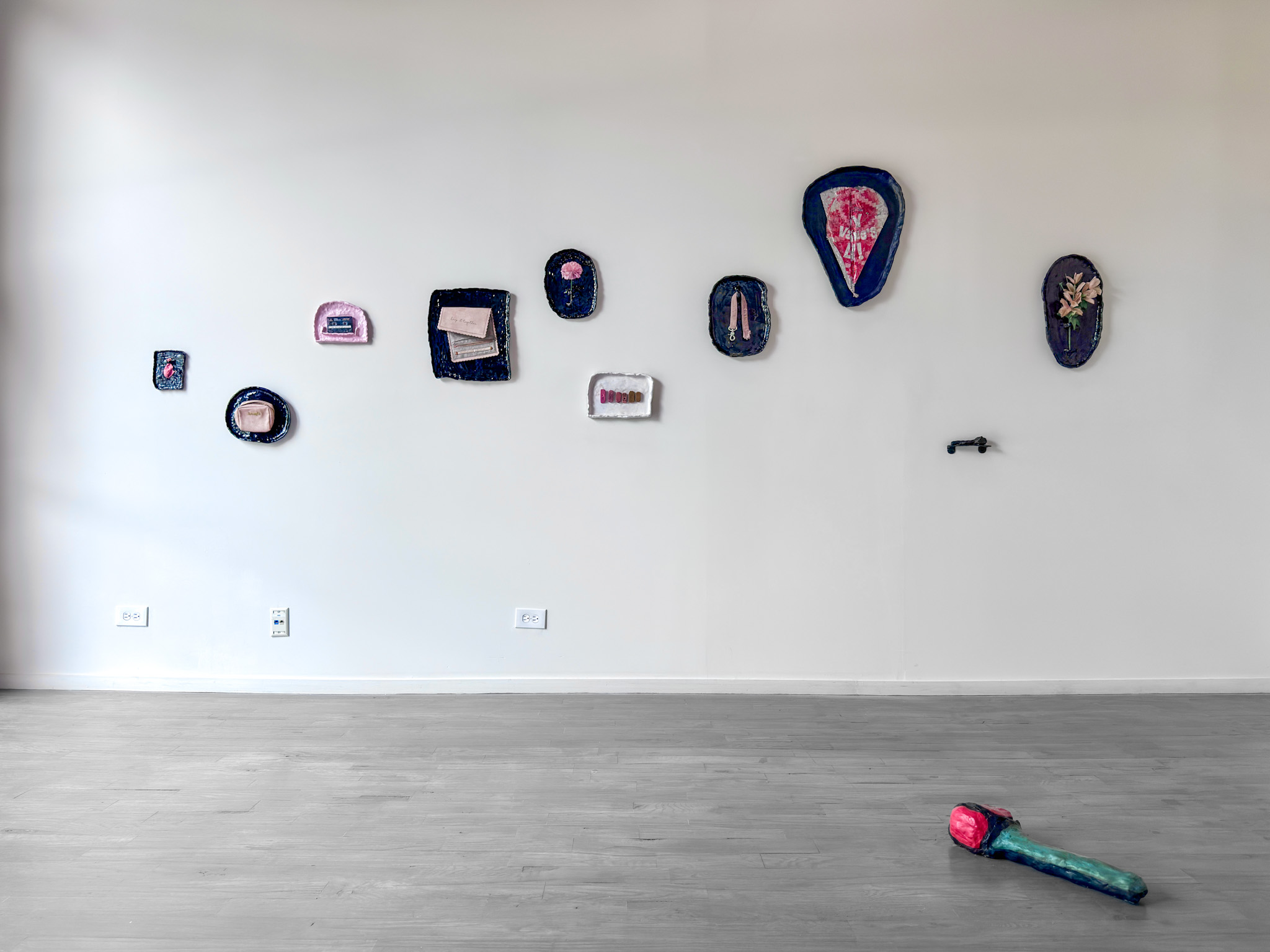 Emmy Bright, Pink Pearls, Installation View
Emmy Bright, Pink Pearls, Installation View
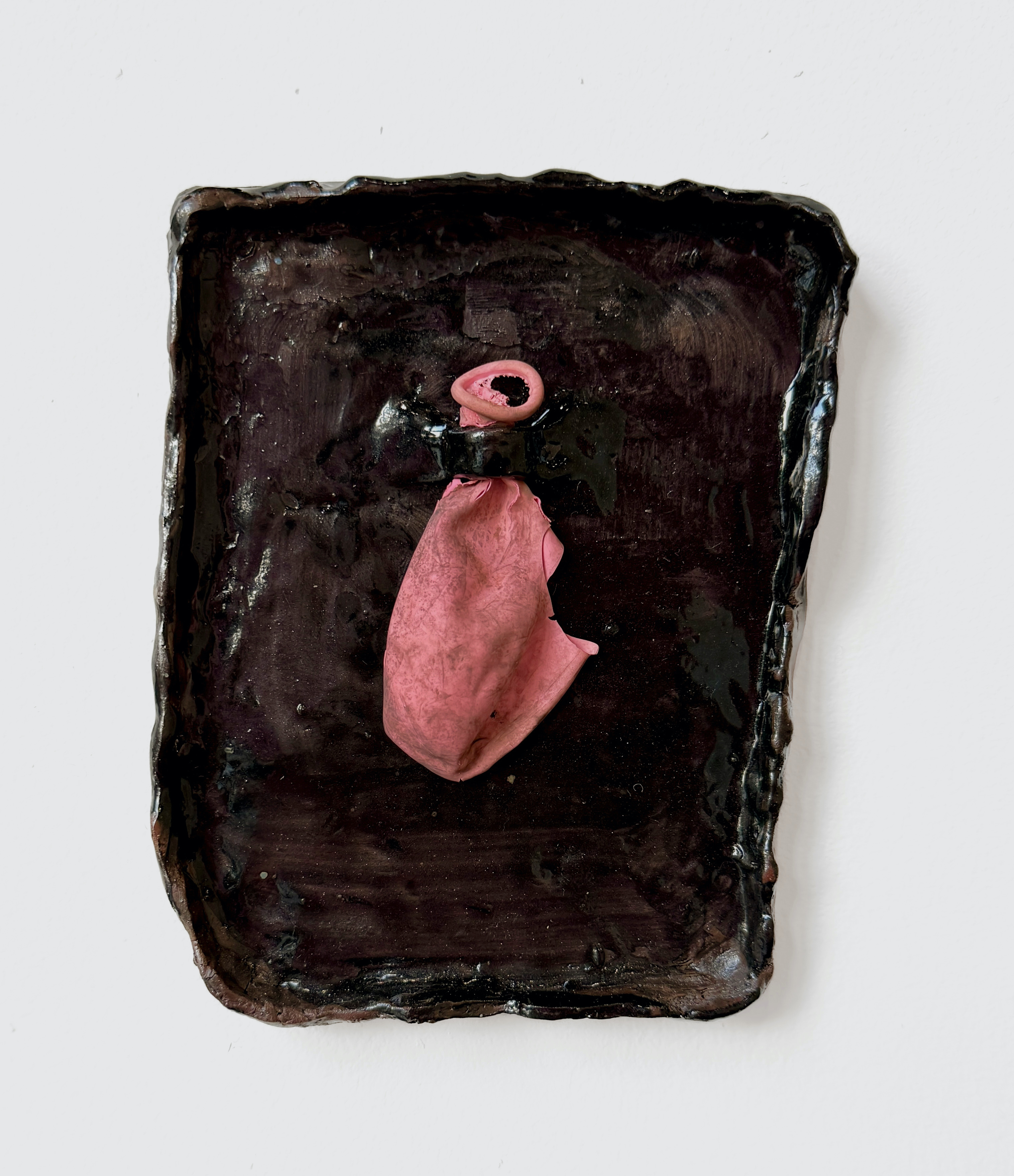 Emmy Bright, I Tried, 2023, Ceramic, glaze, found pink balloon, 6 1/2h x 5w in.
Emmy Bright, I Tried, 2023, Ceramic, glaze, found pink balloon, 6 1/2h x 5w in.
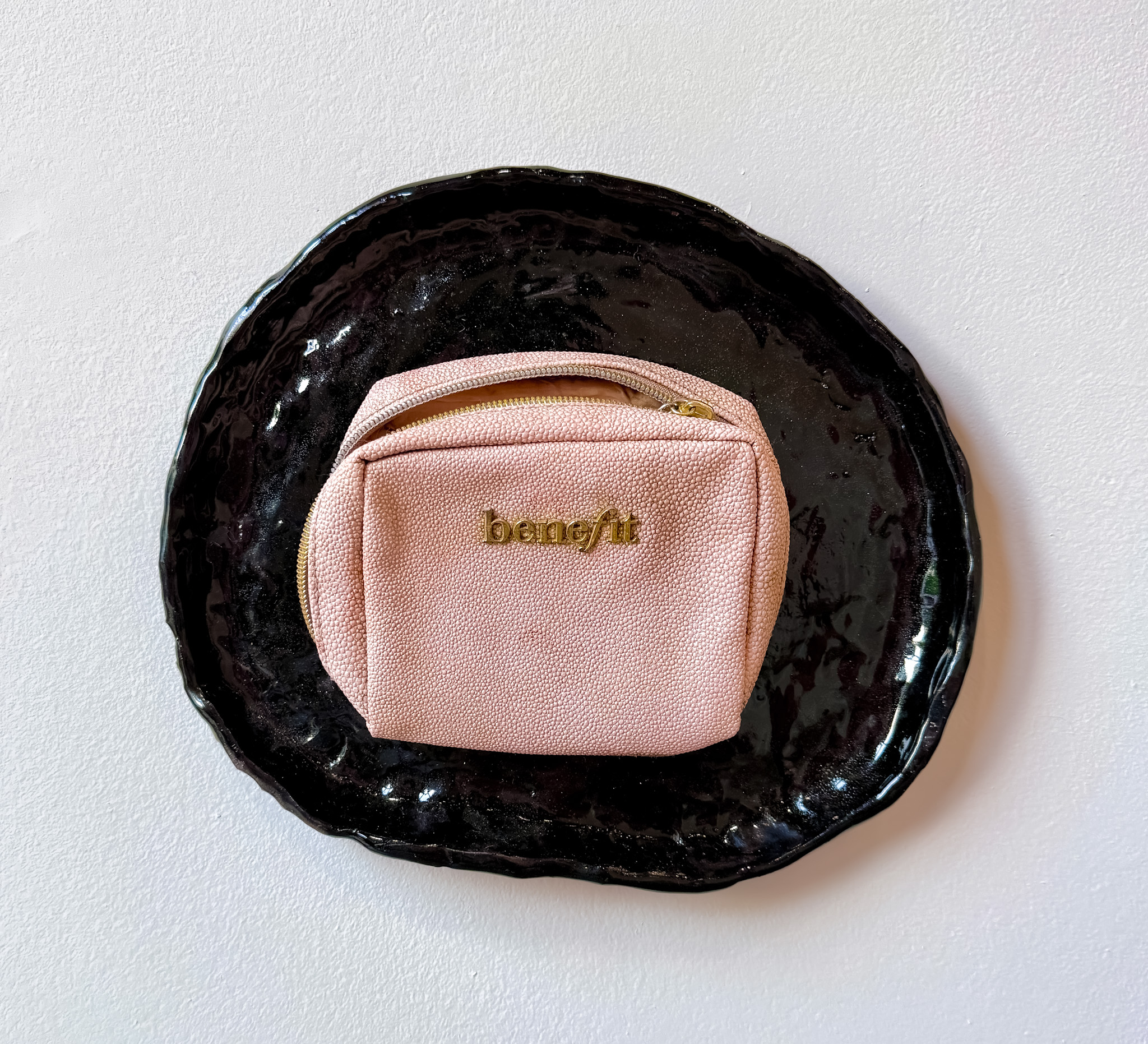 Emmy Bright, Benefit, 2023, Ceramic, glaze, little pouch, 9h x 10 1/2w in.
Emmy Bright, Benefit, 2023, Ceramic, glaze, little pouch, 9h x 10 1/2w in.
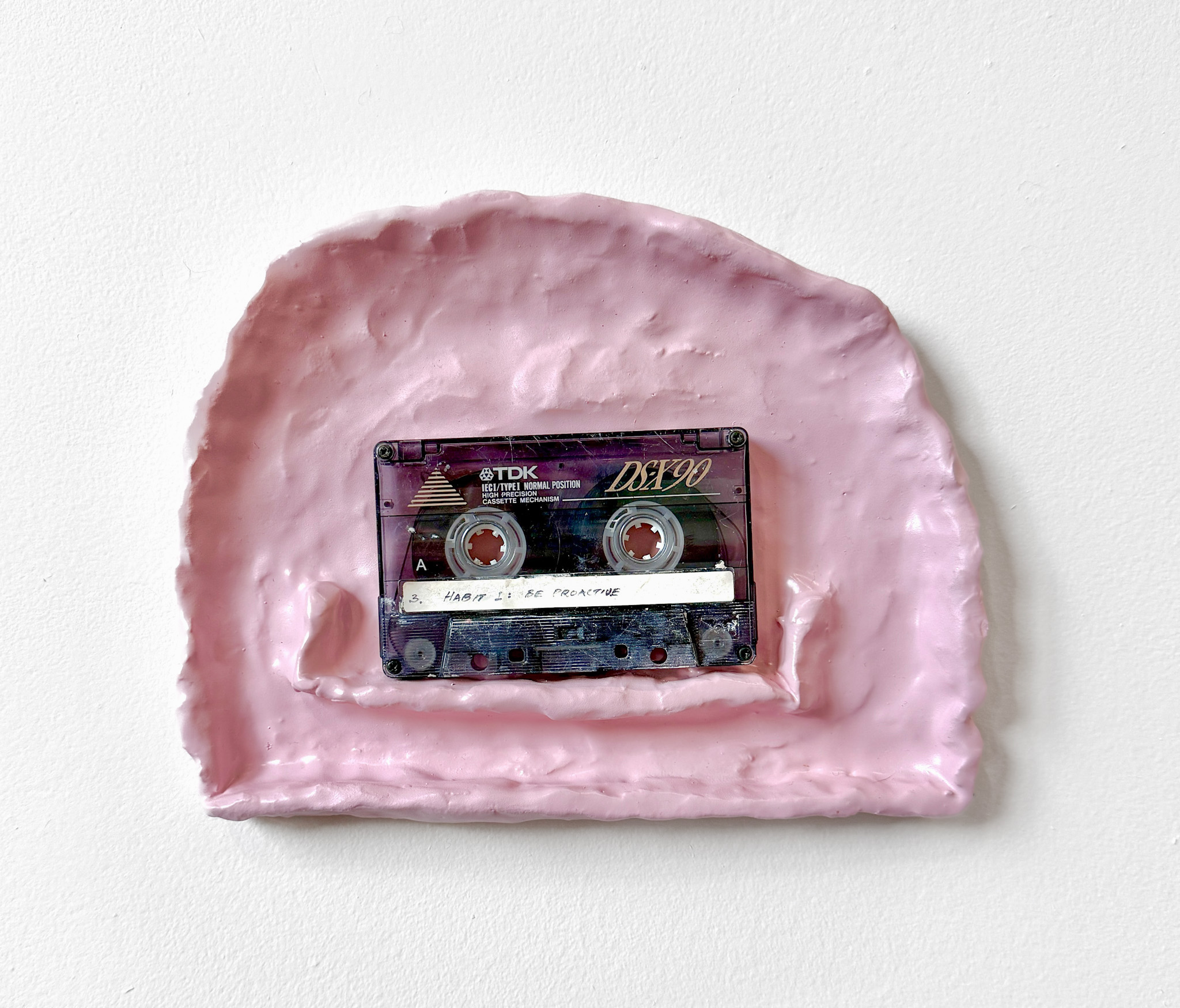 Emmy Bright, Habit No. 1 Tape No. 3, 2025, Ceramic, paint, found tape, 7h x 8 1/2w in.
Emmy Bright, Habit No. 1 Tape No. 3, 2025, Ceramic, paint, found tape, 7h x 8 1/2w in.
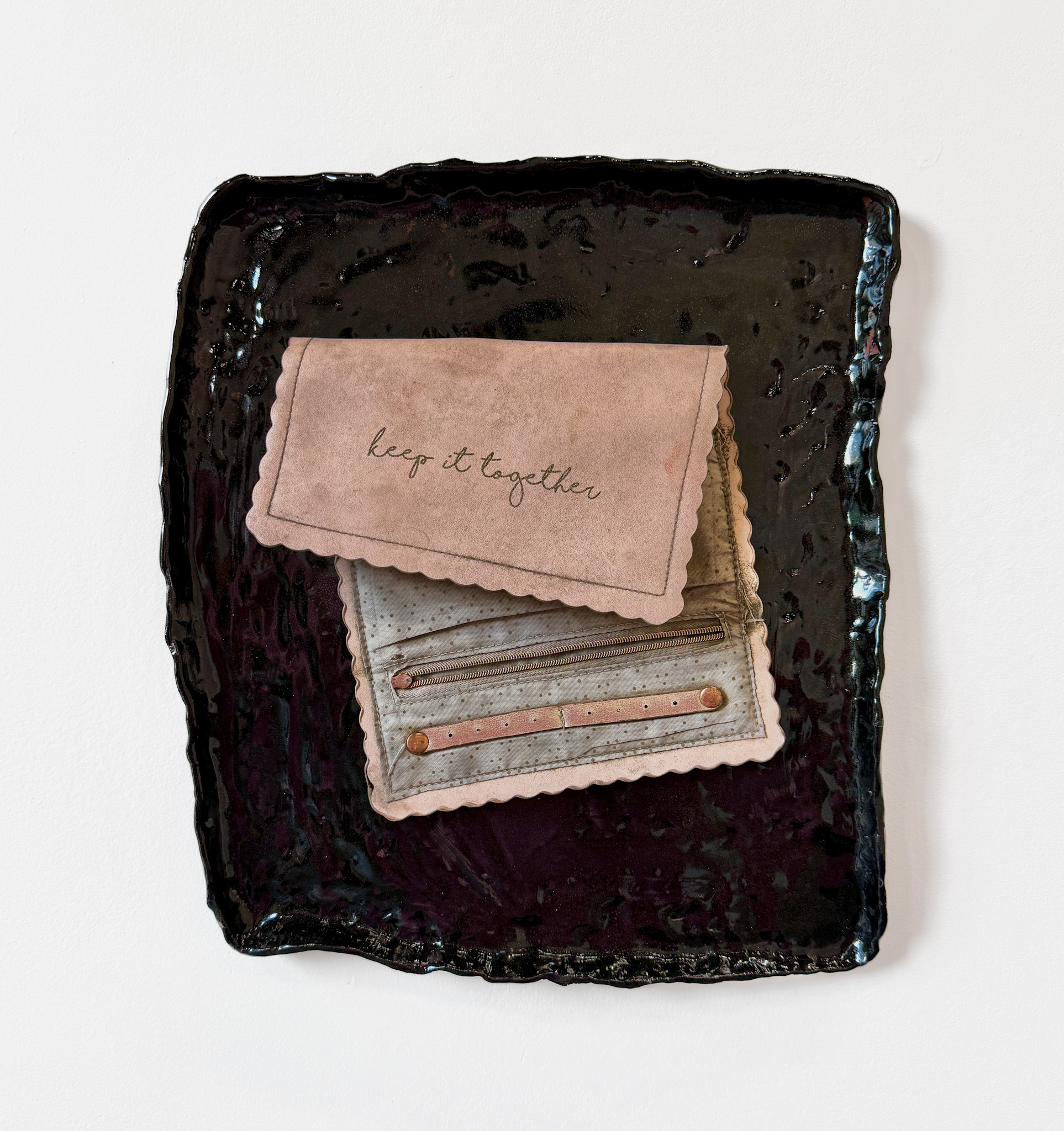 Emmy Bright, Keep It Together, 2023, Ceramic, glaze, pink pouch found in an alley, 15h x 13 1/4w in.
Emmy Bright, Keep It Together, 2023, Ceramic, glaze, pink pouch found in an alley, 15h x 13 1/4w in.
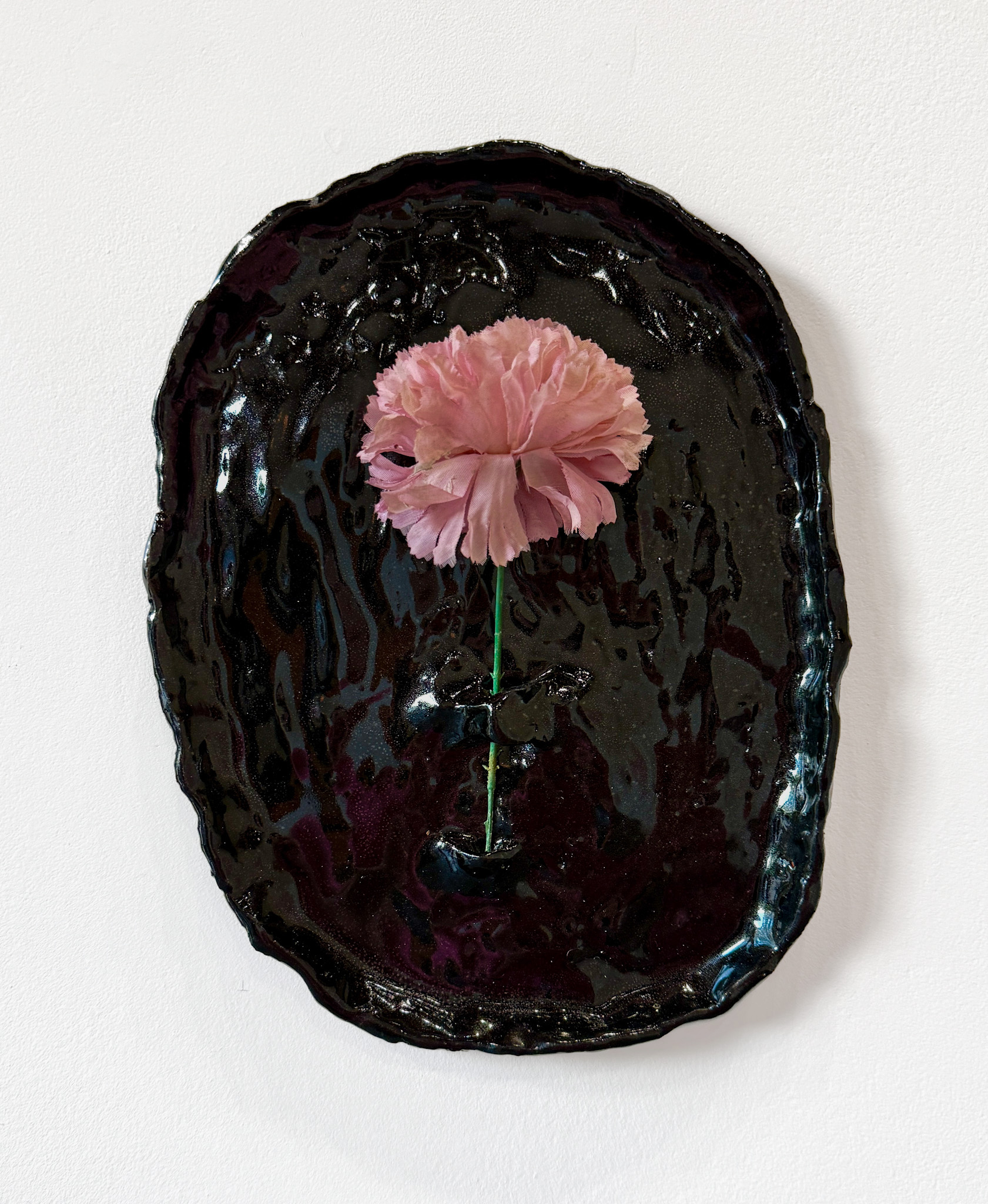 Emmy Bright, Pink Flower, 2023, Ceramic, glaze, pink flower drifted out from a local cemetery, 11 1/2h x 9w in.
Emmy Bright, Pink Flower, 2023, Ceramic, glaze, pink flower drifted out from a local cemetery, 11 1/2h x 9w in.
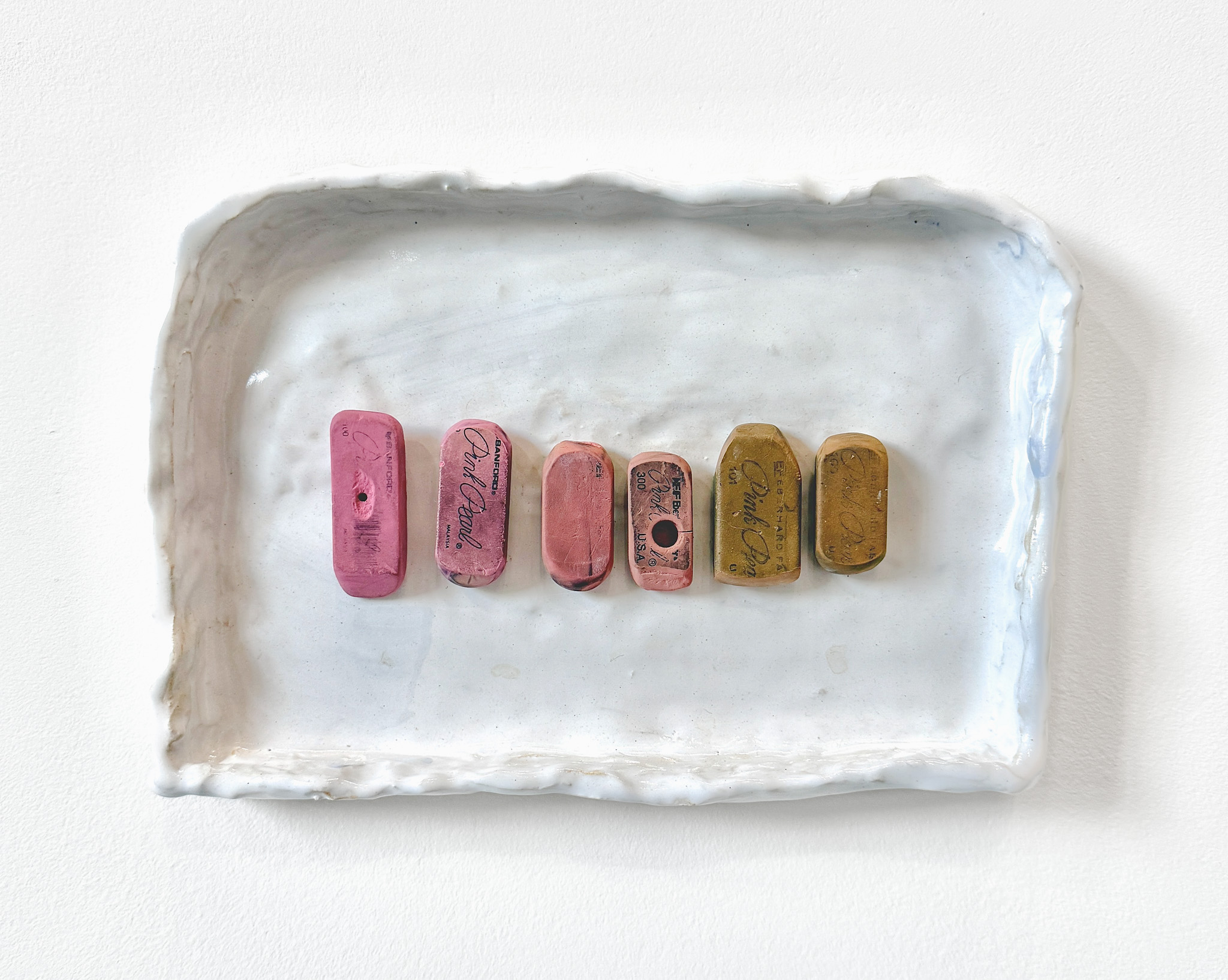 Emmy Bright, Pink Pearls, 2025, Ceramic, glaze, Pink Pearl tired erasers, 7 1/2h x 11w in.
Emmy Bright, Pink Pearls, 2025, Ceramic, glaze, Pink Pearl tired erasers, 7 1/2h x 11w in.
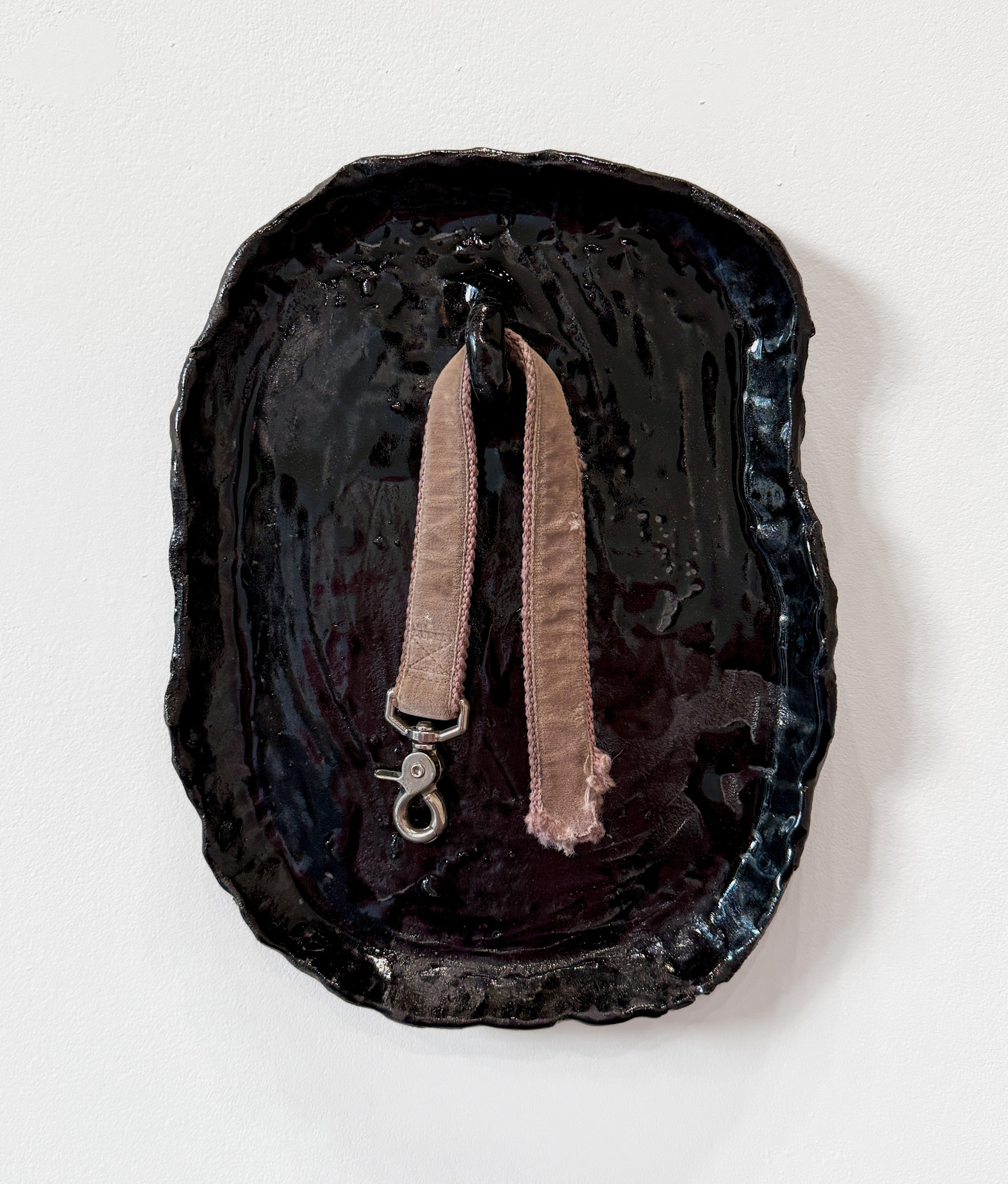 Emmy Bright, Freedom Song, 2024, Ceramic, glaze, chewed and pink dog leash, 13 1/4h x 10 1/4w in.
Emmy Bright, Freedom Song, 2024, Ceramic, glaze, chewed and pink dog leash, 13 1/4h x 10 1/4w in.
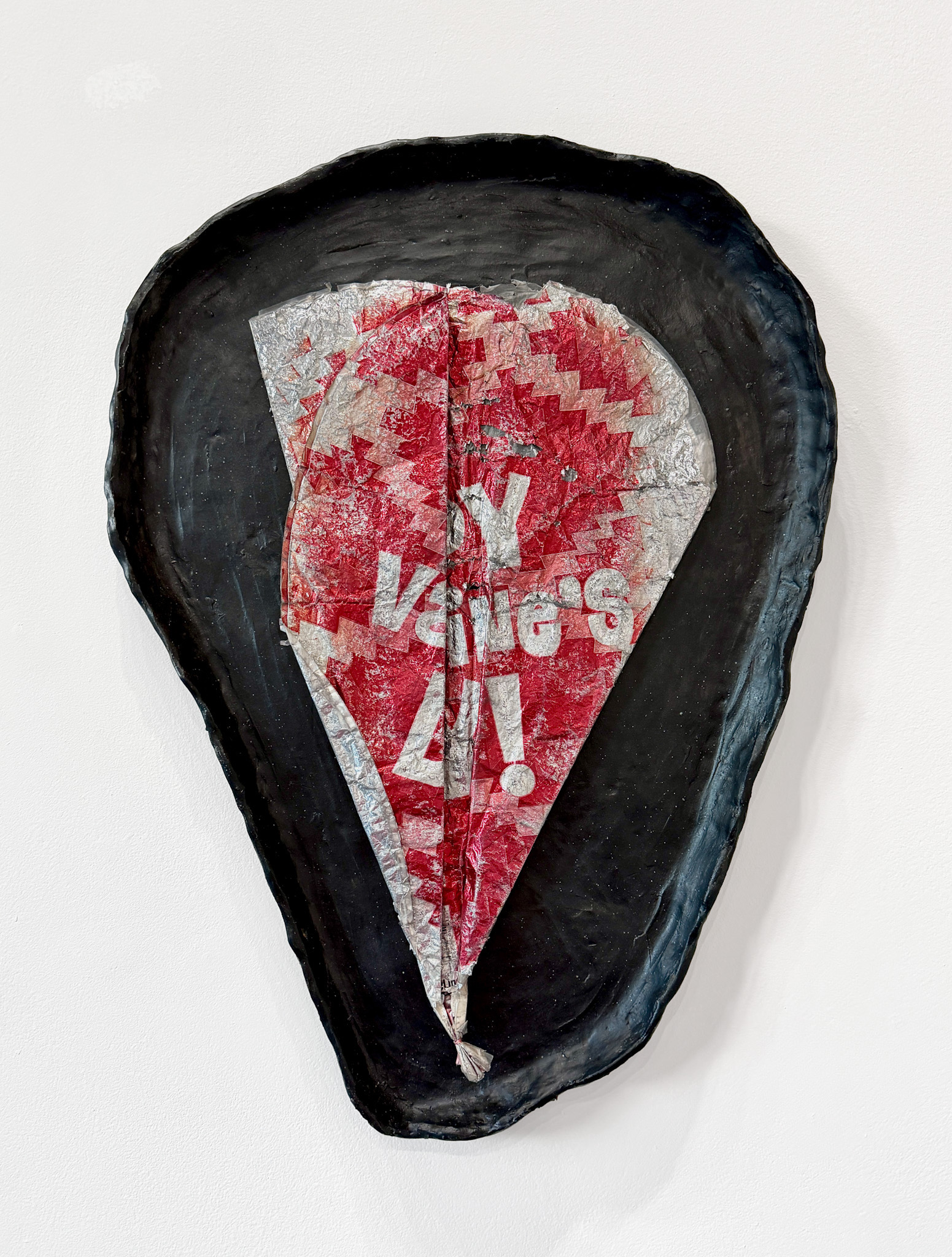 Emmy Bright, "Happy" Valentines Day, 2024, Ceramic, glaze, crumpled balloon, 22 1/2h x 16 1/2w in.
Emmy Bright, "Happy" Valentines Day, 2024, Ceramic, glaze, crumpled balloon, 22 1/2h x 16 1/2w in.
Emmy Bright, Small Butch Flower, 2025, Cast iron, 3h x 7w x 2d in.
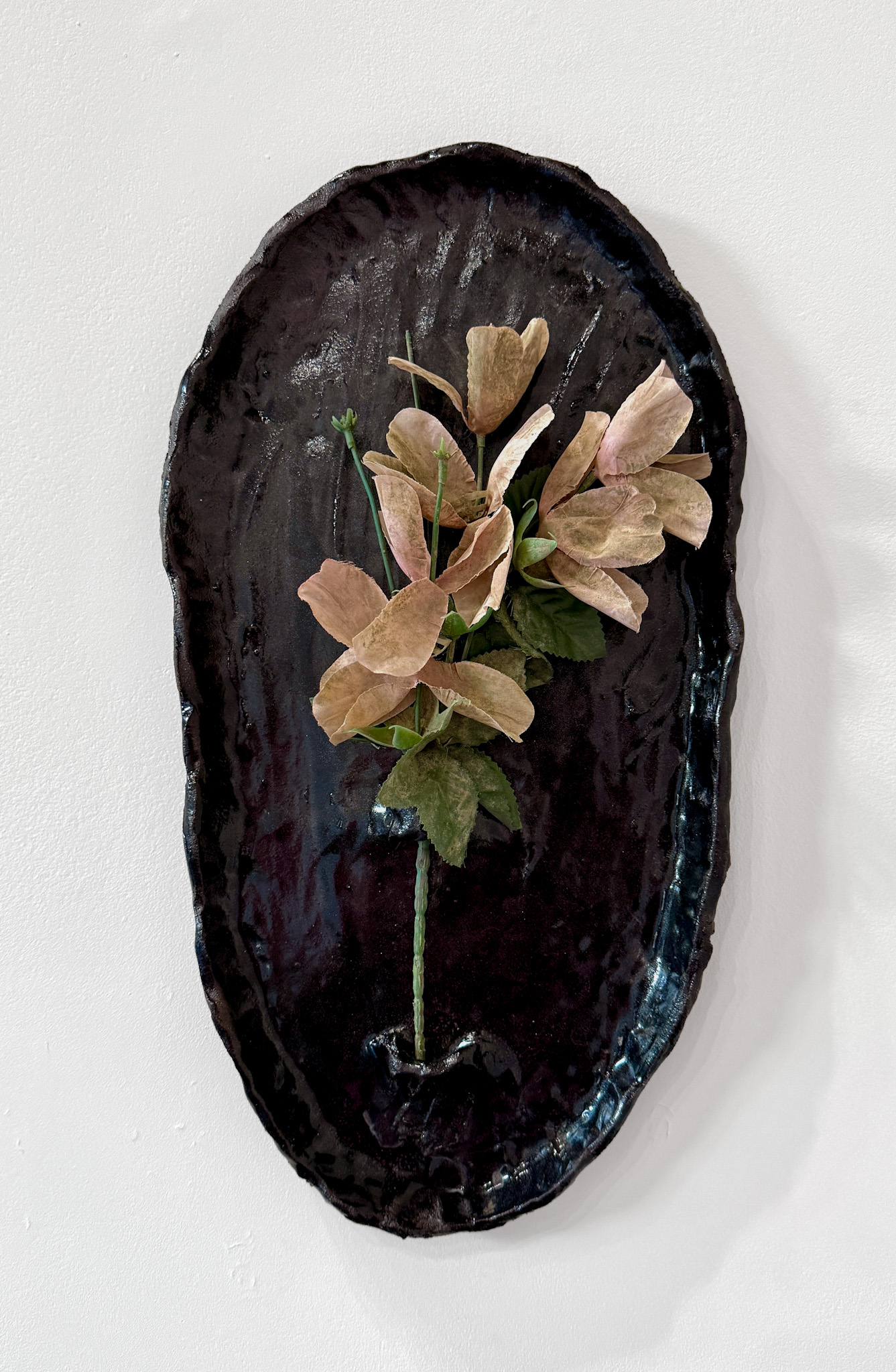 Emmy Bright, Two Lips, 2023, Ceramic, glaze, pink bouquet drifted out from a local cemetery, 18 1/2h x 10w in.
Emmy Bright, Two Lips, 2023, Ceramic, glaze, pink bouquet drifted out from a local cemetery, 18 1/2h x 10w in.
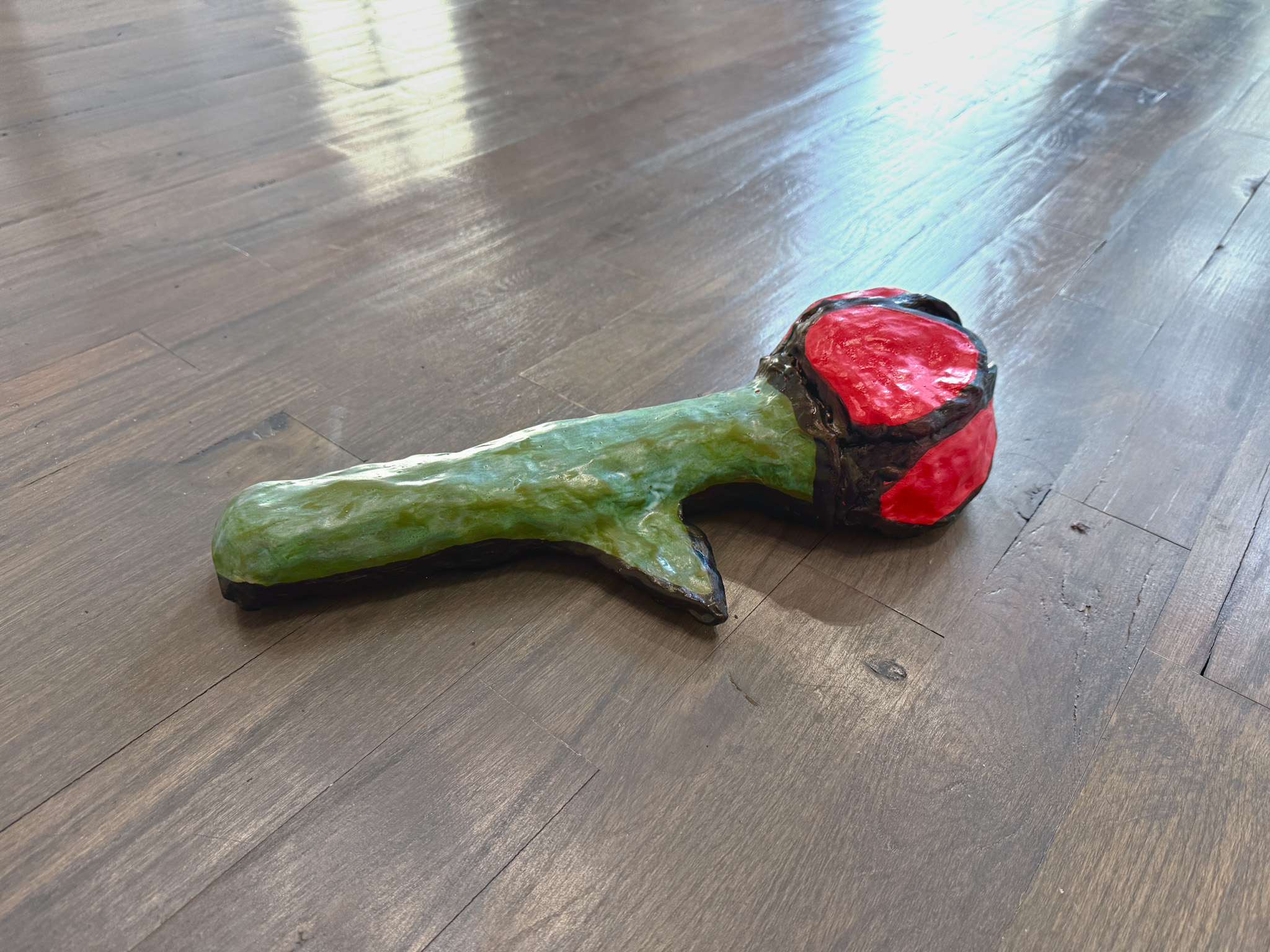 Emmy Bright, Big Butch Flower, 2025, Ceramic, glaze, 5h x 18w x 7d in.
Emmy Bright, Big Butch Flower, 2025, Ceramic, glaze, 5h x 18w x 7d in.
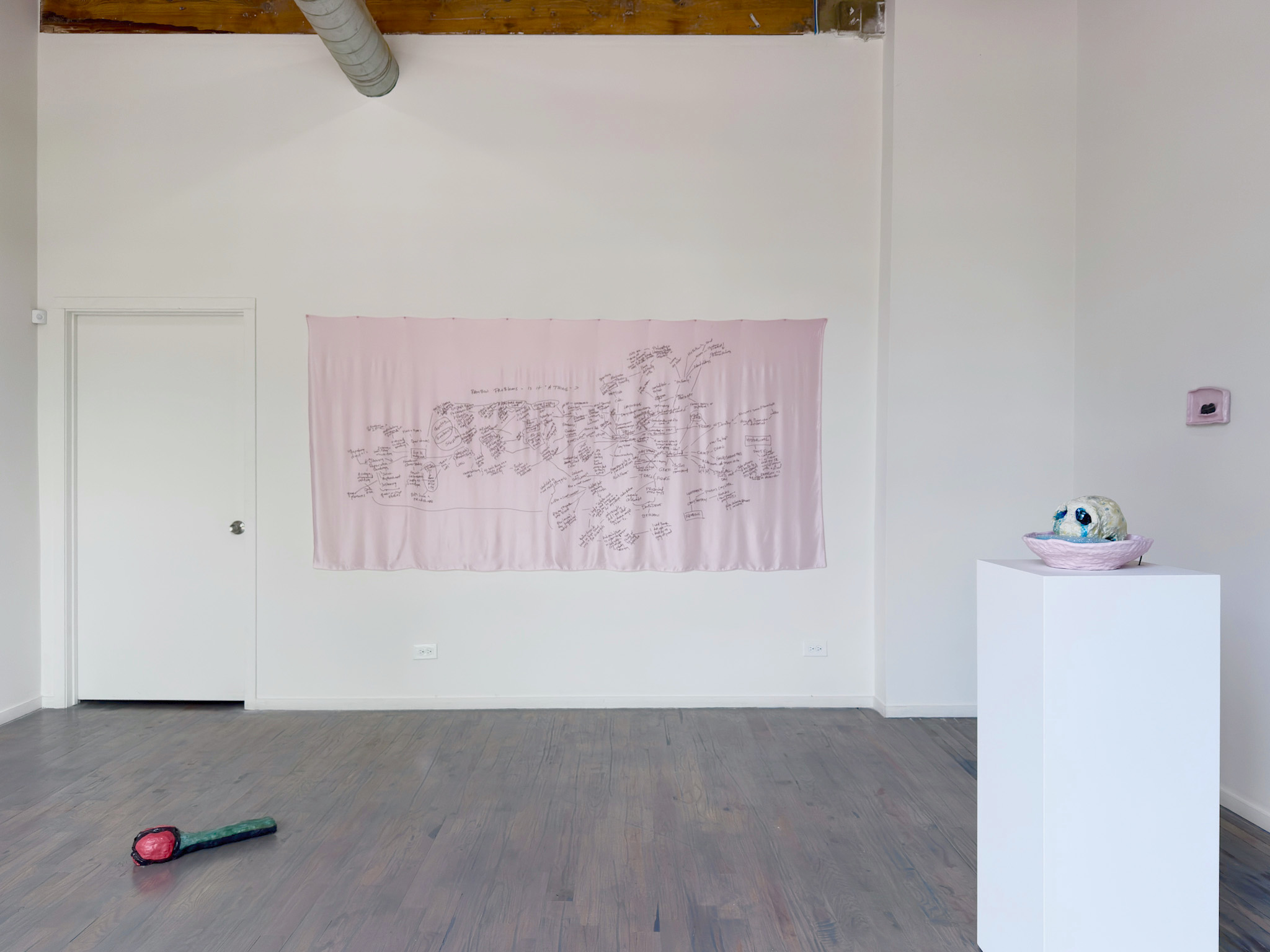 Emmy Bright, Pink Pearls, Installation View
Emmy Bright, Pink Pearls, Installation View
Emmy Bright, Rainbow Problems: Is it a thing?, 2023, Digitally printed satin, grommets, 54h x 104 1/2w in.
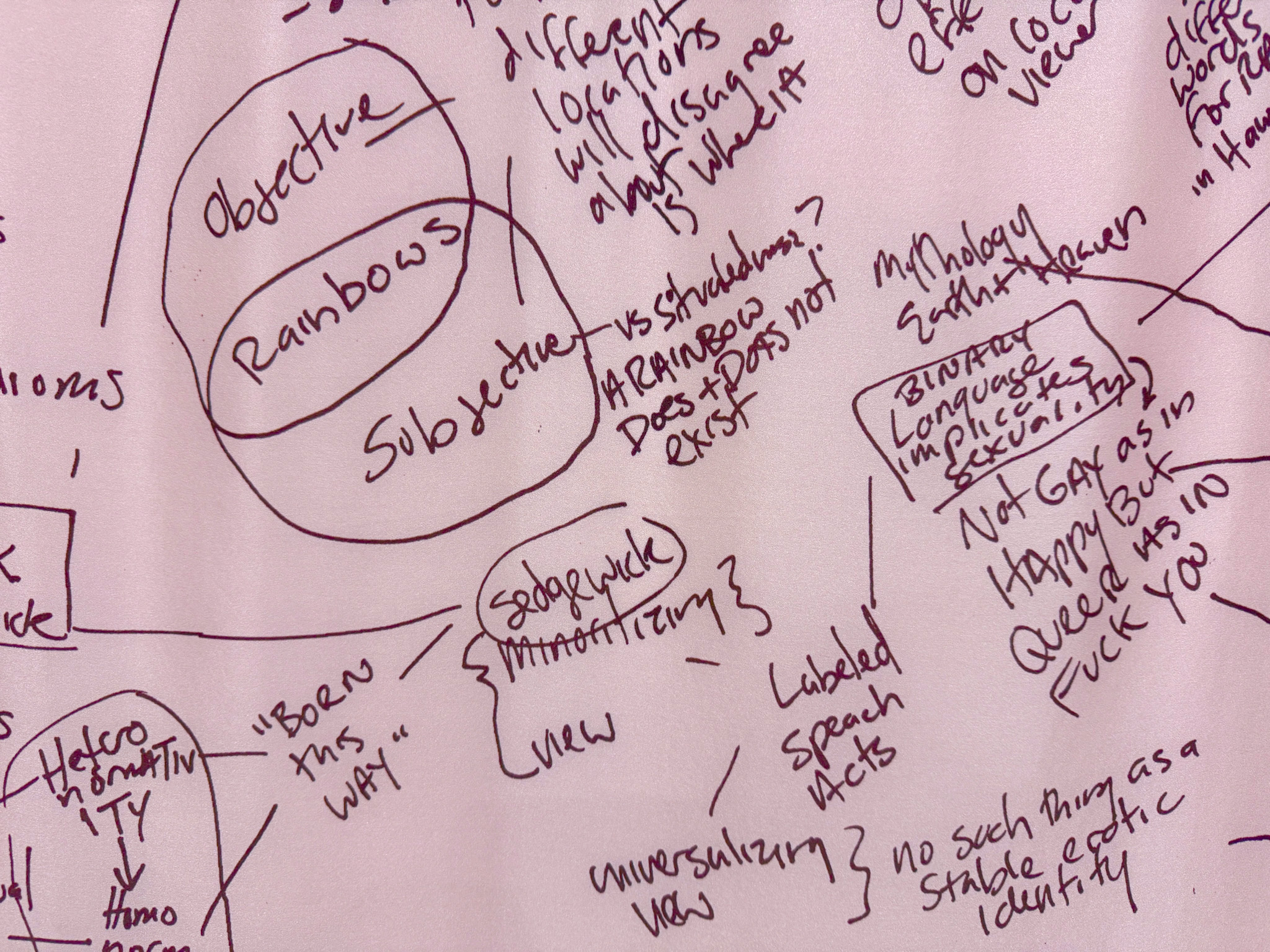 Emmy Bright, Rainbow Problems: Is it a thing?, 2023, Detail View
Emmy Bright, Rainbow Problems: Is it a thing?, 2023, Detail View
Emmy Bright, Pink Pearls, Installation View
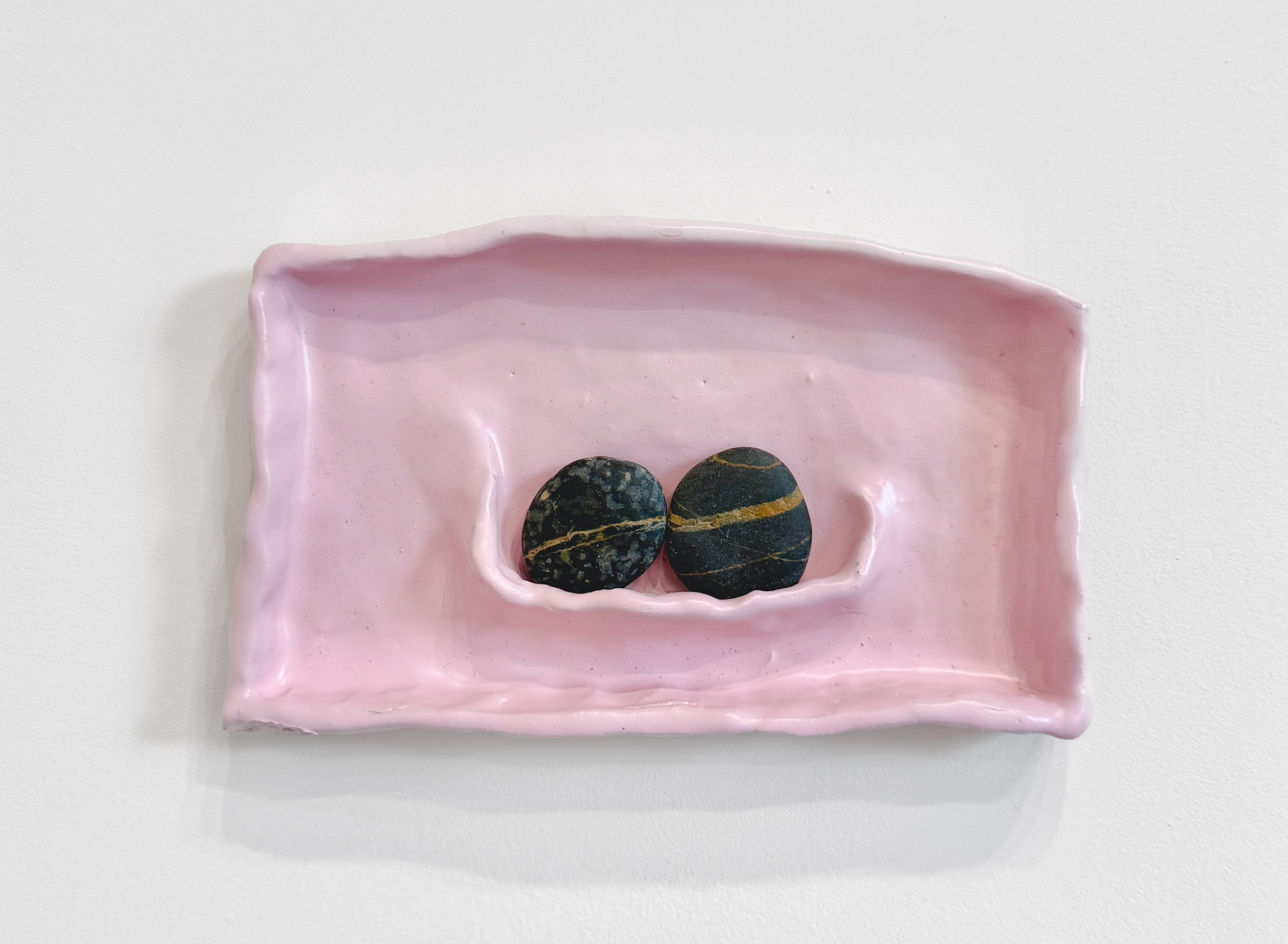 Emmy Bright, Perfect Lovers from Another Mother (after FGT), 2024, Ceramic, paint, rocks found outside my dog's physical therapy office, 6h x 9 1/2w in.
Emmy Bright, Perfect Lovers from Another Mother (after FGT), 2024, Ceramic, paint, rocks found outside my dog's physical therapy office, 6h x 9 1/2w in.
Emmy Bright, Pink Pearls, Installation View
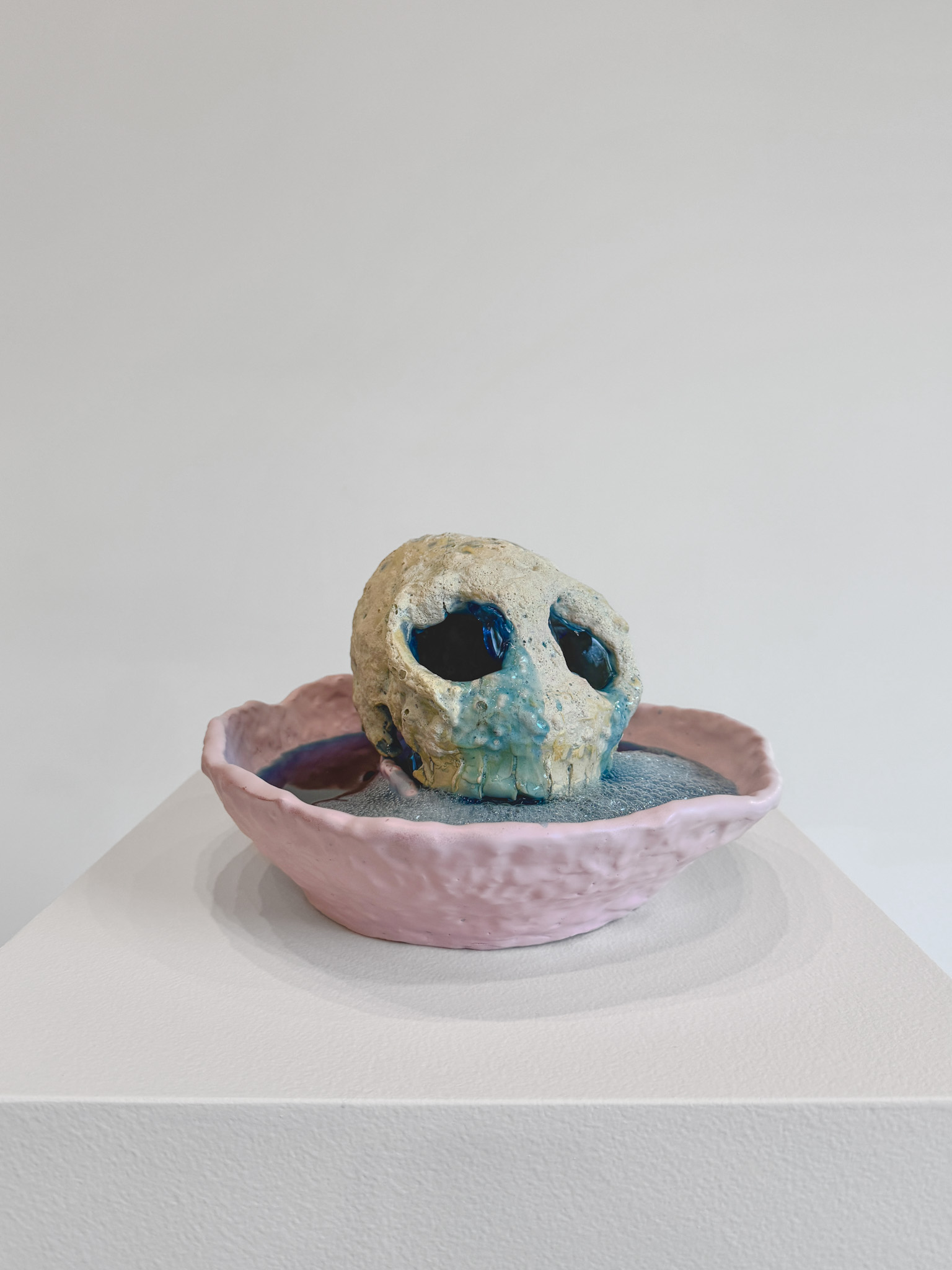 Emmy Bright, Crying, 2023, Ceramic, paint, glaze, pump, blue water, 7 1/2h x 10 1/2w x 12 1/2d in.
Emmy Bright, Crying, 2023, Ceramic, paint, glaze, pump, blue water, 7 1/2h x 10 1/2w x 12 1/2d in.